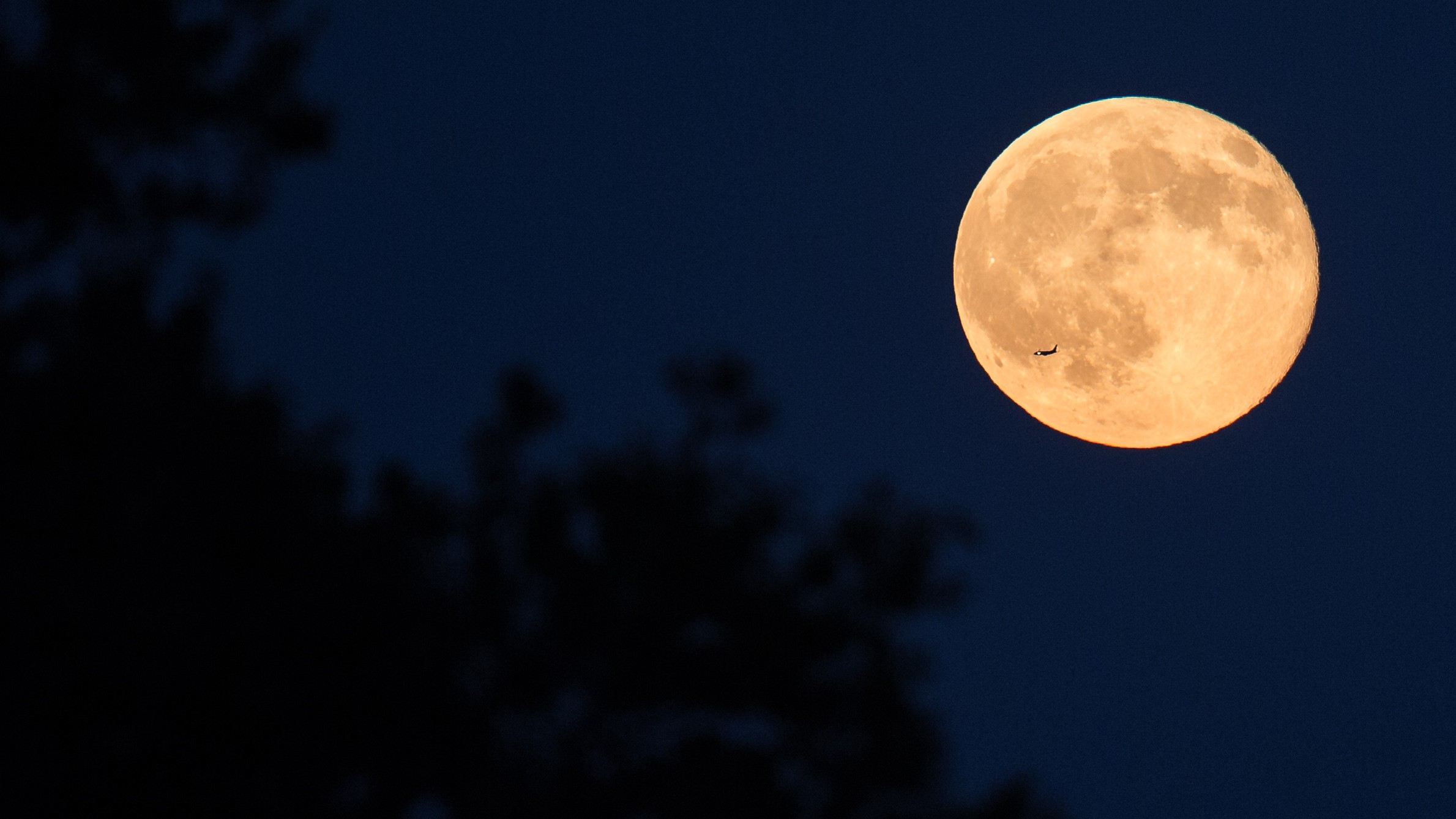
June's full moon, known as the Strawberry Moon, will be at its fullest on Saturday (June 3) when seen from North America, and it will shine close to the bright star Antares in the constellation Scorpius. The moon will also appear bright and full on Friday and Sunday.
Native American tribes named June's full moon the Strawberry Moon as well as the Berries Ripen Moon, after the seasonal harvesting of fruit, according to Timeanddate.com. Other traditional names for the moon include the Rose Moon and Hot Moon. The Anishinaabeg people call it Waabigonii Giizis, or Blooming Moon, according to the Center for Native American Studies.
Related: Will Earth ever lose its moon
The Strawberry Moon will be at its fullest at 11:41 p.m. EDT on Saturday (03:41 UTC on Sunday, June 4). From North America, it will be best seen as it rises in the east a few hours before this time, though the exact time will depend on the location of the viewer. As it appears, the moon will be 99.9% illuminated.
The Strawberry Moon will rise in the east, opposite the setting sun, and set in the west opposite the rising sun. For those in the Northern Hemisphere, it won't get far above the southern horizon and will be one of the lowest-hanging full moons of the year (along with next month's Buck Moon). That's because it's occurring just a few weeks before the summer solstice on June 21, 2023 when the sun is highest in the Northern Hemisphere's sky: As the full moon is on the opposite side of Earth as the sun, the moon mimics the sun's daytime path from six months ago, according to EarthSky. In the Southern Hemisphere, it's the other way round — the Strawberry Moon will be one of the highest full moons of the year.
About every 20 years, the Strawberry Moon coincides with the date of the solstice, according to Timeanddate.com.
It’s the sixth full moon of the year and the final full moon of spring in the Northern Hemisphere, and the Strawberry Moon will rise alongside the red supergiant star Antares in the constellation of Scorpius. Also known as the Scorpion's Heart, Antares is located 550 light-years from the solar system and is the 15-brightest star in the night sky, according to EarthSky.
After the Strawberry Moon, the next full moon will be the Buck Moon on Monday July 3.
If you're looking to get into skywatching and astronomy, we have plenty of guides to help you get started. If you want to view the night sky then our best binoculars for stargazing and best telescopes guides have you covered, while the best astrophotography cameras will let you capture those spectacular views for others to enjoy.







